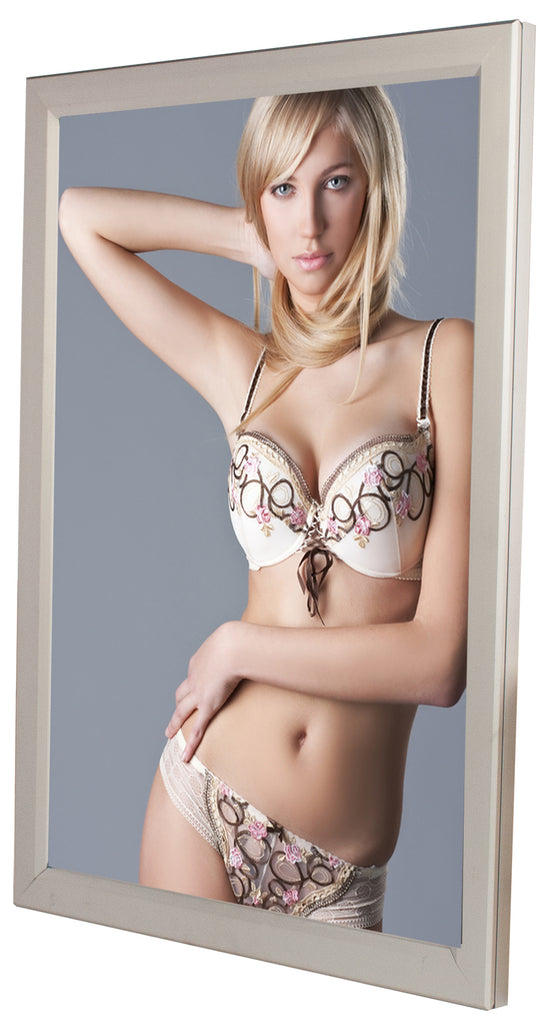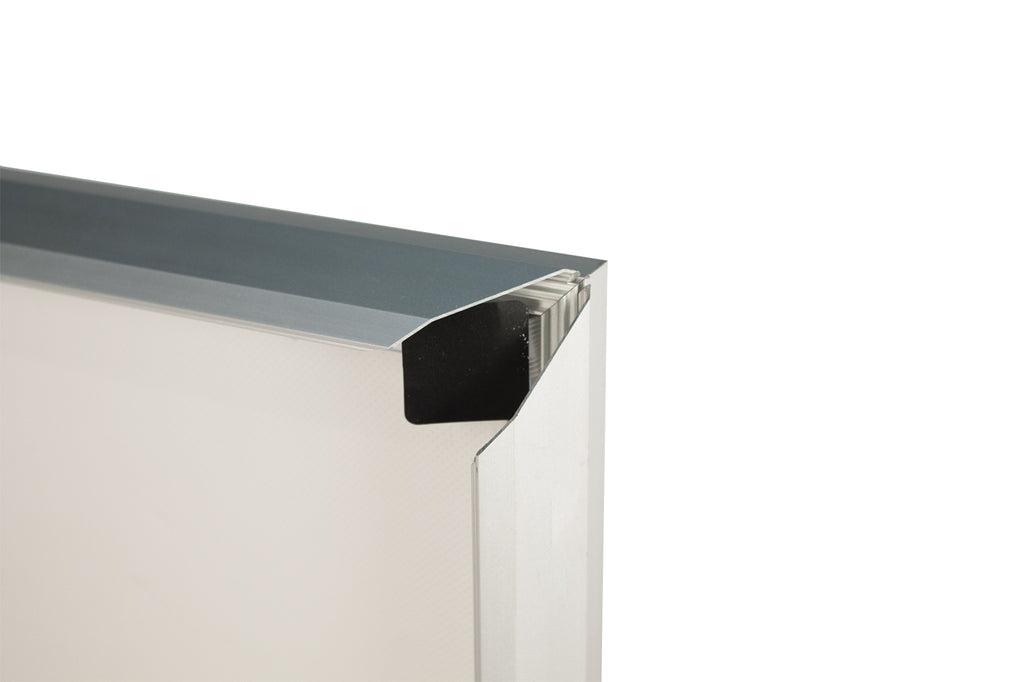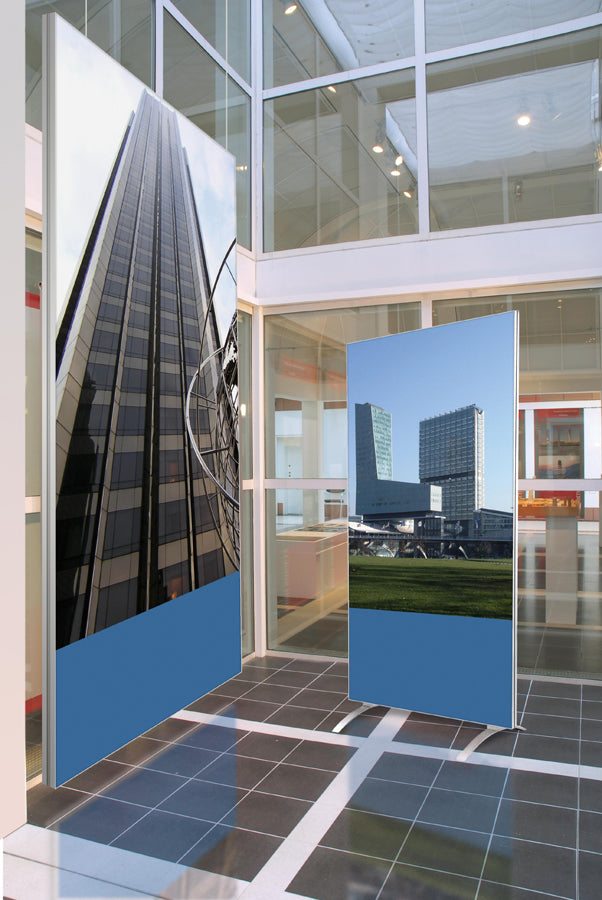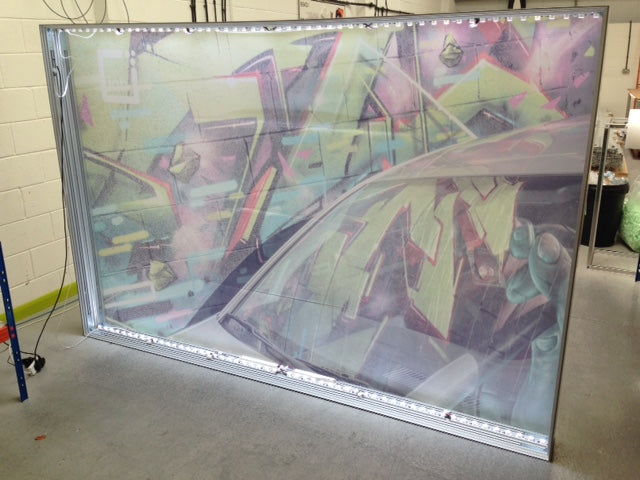So, why would you want a light box? If you are involved with the general public, and sell or provide information from any brick and mortar outlet, you need one.
A light box is an inexpensive way of promoting your products or services on a large scale.
Getting vibrant, exciting, stunning images installed in your store or office environment has never been easier.
You do not need to add any additional lighting to your existing ceiling lighting or rely on ambient light to illuminate your information. You also remove the ‘halo’ type effect of front projected light emitted from spot lights. You know the effect I mean.....that intense area of bright light that virtually washes out the image leaving the remainder of the image in shadow. Leave spot lights for the theatre.
A light box uses LED lighting technology. This reduces heat output dramatically, it is extremely energy efficient and virtually maintenance free.
Solid-state small format light boxes range in size from A4 (210mm wide x 300mm high) up to A0 (840mm wide x 1200mm high) and are very slim in profile, simple to wall fix or suspend from any ceiling and feature a snap-frame to effortlessly change-out your information.


Large format light boxes adopt a new print technology called Dye-Sublimation. This is a digital printing process using full colour printed directly to a polyester coated substrate such as fabric. Using a process of heat transfer, the image is eventually made permanent through the sublimation process by embedding the printing ink into the fibers of the material. The print will not peel, fade or crack and can be washed and re-used repeatedly.

A large format light box is available wall mounted, free-standing or ceiling mounted and is custom-made to any size creating a seamless and frameless, full colour printed image. A light box of this nature is made using light weight aluminium profiles which form the profile frame and structural rigidity of the light box.
The light is emitted from a parallel run of LED strip lighting located on the inside face of two of the frame profiles. This method completely eliminates problem hot spots and shadowing across the image surface and it provides a perfectly even and brightly lit image.
The fabric graphic is stitched around the perimeter edge with a clear silicone bead which is then pushed into a continuous slot running around each edge of the profile frame. The fabric is placed under tension as the fabric is fed into this slot by hand creating a perfectly taut, seamless and frameless graphic image that can be removed very quickly. This lets you and any member of staff replace a graphic, time and time again, using the same hardware. This is a very simple process.
A light box is a great tool to support your on-line offer, encourage customer flow and it’s also a medium which allows you to easily change POS.
(POS) Point of sale is critical to your business growth and success. POS changes seasonally. This is an important factor for you, so a light box will enable you to change-out new campaigns quickly and efficiently, and provide information at key focal points during the customer journey.
Use your new light box as part of your window display as a suspended, wall mounted or free standing display. Create stunning walk-in entry images for art galleries, museums and cultural venues such as stately homes. The large format, aluminium framed light boxes are ideal for use as complete wall structures for your next exhibition booth or indoor event because they are light weight, modular and self-build saving you money on your show budget.
Tensile fabric-faced light boxes are not suitable for outdoor applications or installations that require structural support like display shelves or mezzanine floors.
When considering a light box for the first time, decide on the location, size and type of light box that best suits your message. What is it you want your light box to show? For instance, if you have a fashion retail store, look to integrate a light box between your display rails to highlight a particular seasonal range, and perhaps place a light box inside changing rooms to offer ideas on garment combinations and colour options. Try creating an interesting montage of images, or of the same image, using light boxes as a tile effect on a large open wall space.
Think about electrical supply. Light boxes are supplied with a single plug making them very easy to install. However, getting an electrical supply to the chosen location of your new light box is not always practical. Get advice from a qualified electrician beforehand.
Provide the very best print ready artwork you can. This will make or break your image presentation particularly on a large scale. There is nothing worse than an image that is slightly blurred or fuzzy around the edges. This is even more apparent when text is used a part of the overall image. Download this artwork guide for further information.
You are perhaps wondering how much a light box costs? Solid-state snap-frame LED light box start around £62.00 for an A4 size going up to £458.00 for an A0 size.
With the large format tensile fabric-faced light boxes these tend to be custom made and start at £1200.00 for a 2m high x 1m wide.
For the next step to buying your light box contact a specialist here to help you deliver the best solution for you.

